Have you ever wondered what it could have been like to be a medieval knight and don a steel body armor suit to protect yourself during duels and battles? Well, in some ways, it is similar to this, our fun and informative list of animals who have been given natural armor by mother nature to boost their chances of survival in this, well, excuse the pun, “jungle of a world.”
What Is an Exoskeleton?
It is the hard bony type shell-like structure covering for some insects and animals to protect them from predators and outside forces. It is referred to as the opposite of the endoskeleton, the internal bones inside almost all animals that support the whole body to keep its form. An exoskeleton is made out of a substance called chitin.
Chitin, like cellulose, is a polysaccharide that contains calcium carbonate, the component that is the hard substance that makes eggshells and rocks hard.
Insects and Animals that Have Exoskeletons
1. Grasshoppers

Grasshoppers are invertebrates which means that they have no backbone. Only their exoskeleton covers their head, thorax, and abdomen, which protects and holds them together. A grasshopper can either be brown or green, depending on the class of species it belongs to. With six legs, two pairs of wings, and a pair of antennae, the grasshopper breathes through holes called “spiracles” located along the sides of its body.
It can jump many times the whole length of its body with its very powerful hind legs. The grasshopper can also fly at a top speed of 8 miles per hour.
2. Bees
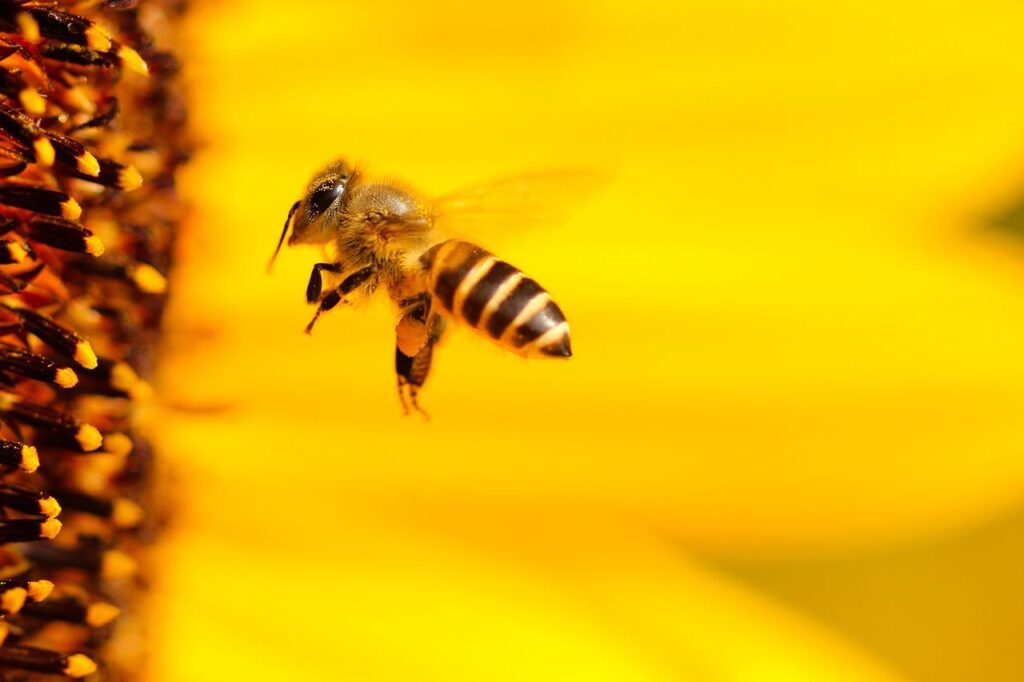
Bees mainly live in colonies that are organized in hierarchies. They are vital insects that serve the purpose of
pollination. Its exoskeleton forms the shape of its body, keeps water out, and is covered in hair. They, too, don’t have internal bones, just the organs under the exoskeleton itself.
It is also flexible and mobile, especially around the abdomen. Honeybees, in particular, have their exoskeleton covered in wax. The function of its body hair is to aid in gathering pollen as it hops from one flower to another. The color of its Exo is generally black or dark brown.
Bees are a necessary and crucial class of insects to the earth’s natural ecosystem. It is said that a world without bees would not sustain the human population.
3. Mites
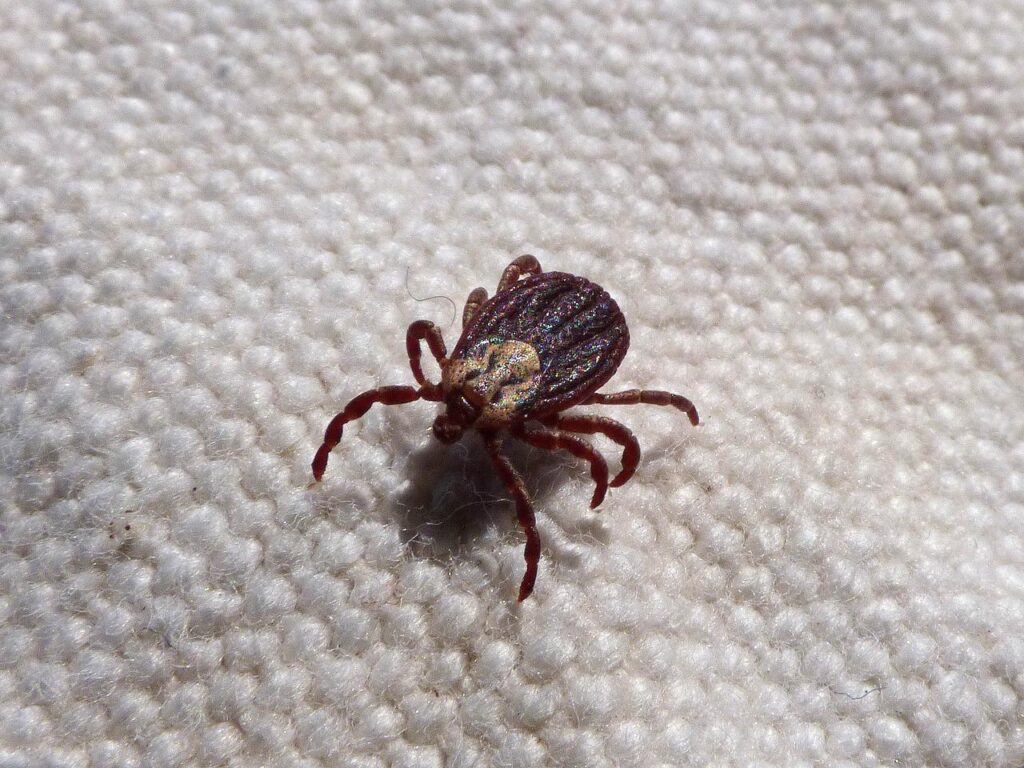
Mites belong to a class of insects called arachnids, which most have exoskeletons. They are parasites that live off the blood of other animals.
Different mite species can live on land or in the water, as they are barely visible to the naked eye. However, they look like jellybeans with legs when put under the microscope.
Apart from living off the blood of their host, they do not hunt but scavenge for materials like skin flakes
and detritus from their host animal. At the least, however, they do clean up as they eat. They also regularly shed their exoskeletons as they grow.
4. Water Beetle
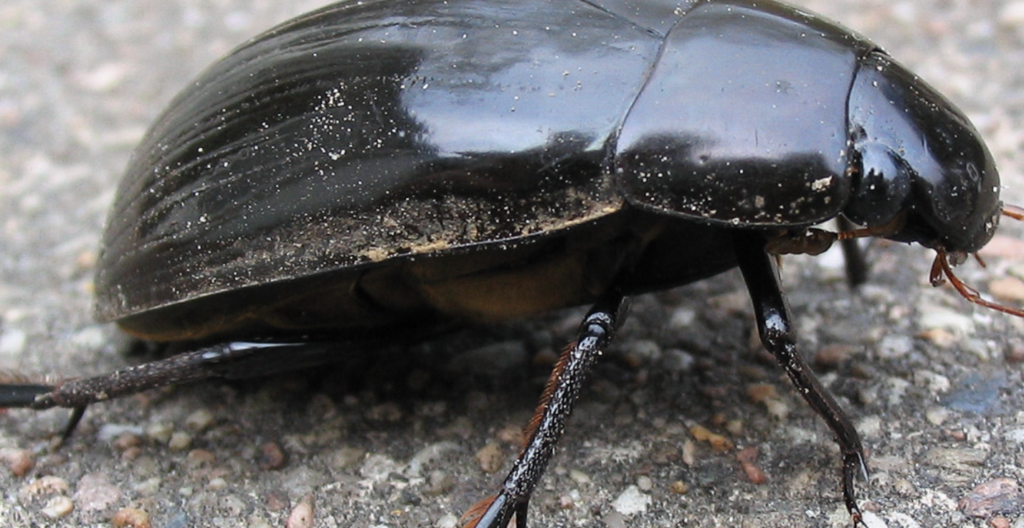
The water beetle is a beetle that is adapted to live in water as it lives near the shore where high and low tides can be observed. Also, water beetles are known to have the toughest exoskeleton of any insect so far. Some of them have specially adapted exos that form a layer of air around their body called “plastron.”
The plastron is a stationary layer of air on the beetle’s body surface, allowing the insect to breathe underwater without ever having to come up for air on the surface.
5. Crabs

Crabs are animals that are classified as crustaceans, as you will know them by their familiar outer exoskeleton, hard
shell, and strong claws. The crab‘s version of chitin (its exoskeleton component) is highly-mineralized, giving it
extra hard consistency. Crabs are feisty and can defend themselves well from would-be predators while hunting for food.
Crabs scavenge on the sea bed as they don’t swim but rather walk around underwater. They eat almost anything, including plants and animals, dead or alive.
5. The Black House Spider

You may find the black house spiders on window sills, walls, trees, and anywhere in and around the home. They have a dark gray body with a light charcoal gray on the stomach shows a dorsal pattern of white markings. Females can grow as much as 18 millimeters in size compared to males, who can only grow up to 9 millimeters. Its exoskeleton covers the first anterior major body part called the carapace.
This black house spider, sometimes referred to as the “funnel-web spider, spins messy triangular sail-like webs that look like funnels. They use their web to trap prey. They spend most of their time at the bottom of the web funnel waiting for prey to come in.
6. Sea Spiders
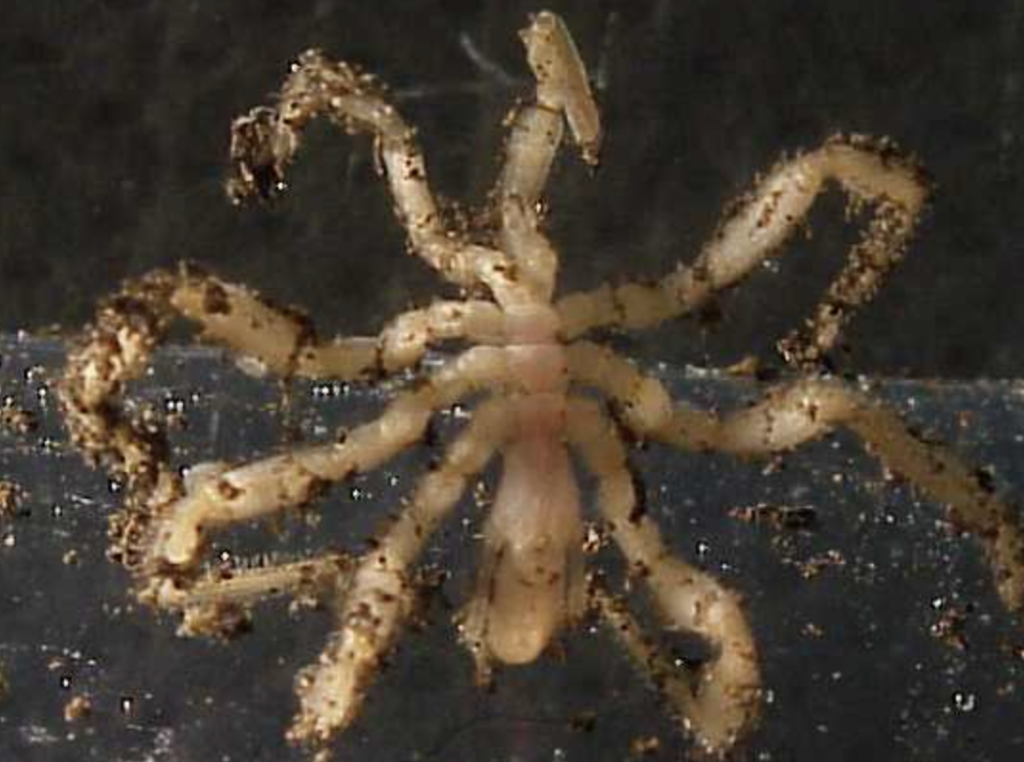
Sea spiders have a hard exoskeleton covered with tiny pits and hairlike structures. According to studies, it could be that it helps them feel and taste their surroundings. Its Exo is so thin that the sea spider can breathe through it too.
Hence, no need for a respiratory system. Just like land spiders, they also have eight legs that are thin with which they go along around the seabed, camouflaging and mimicking the seafloor’s white color to protect themselves while they forage.
They can grow from 1-9 millimeters in length, while some deep-sea species can grow much bigger with legs that can reach a foot in length.
7. Turtles
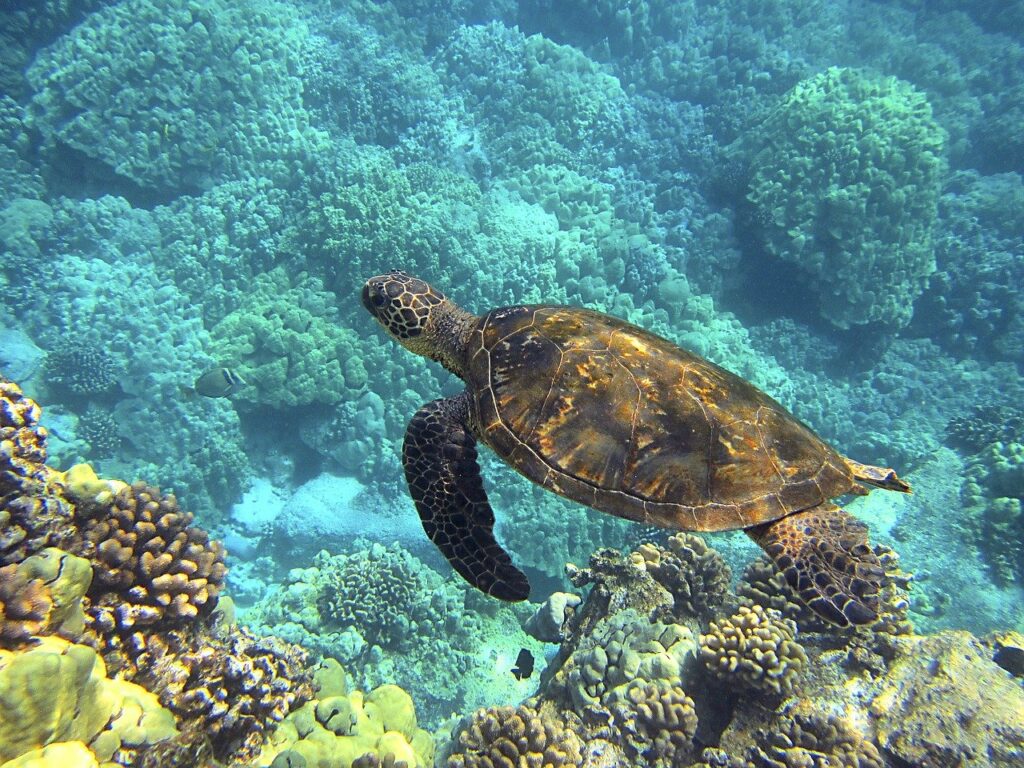
The exoskeleton in turtles is more recognizable by its carapace. The hard top portion of its shell is shaped like a dome fused to the backbone and the ribs. Added to that, the shell is entirely covered with large plates. It also protects the turtle’s soft underside, including its organs, making it look like the turtle is carrying its house on its back.
There are many species of turtles worldwide, and they live in fresh and saltwater habitats. Turtles that live on land are called tortoises. Classified as reptiles in the animal kingdom, turtles are cold-blooded animals, meaning they maintain temperature depending on how hot or cold their environment is.
8. Centipede
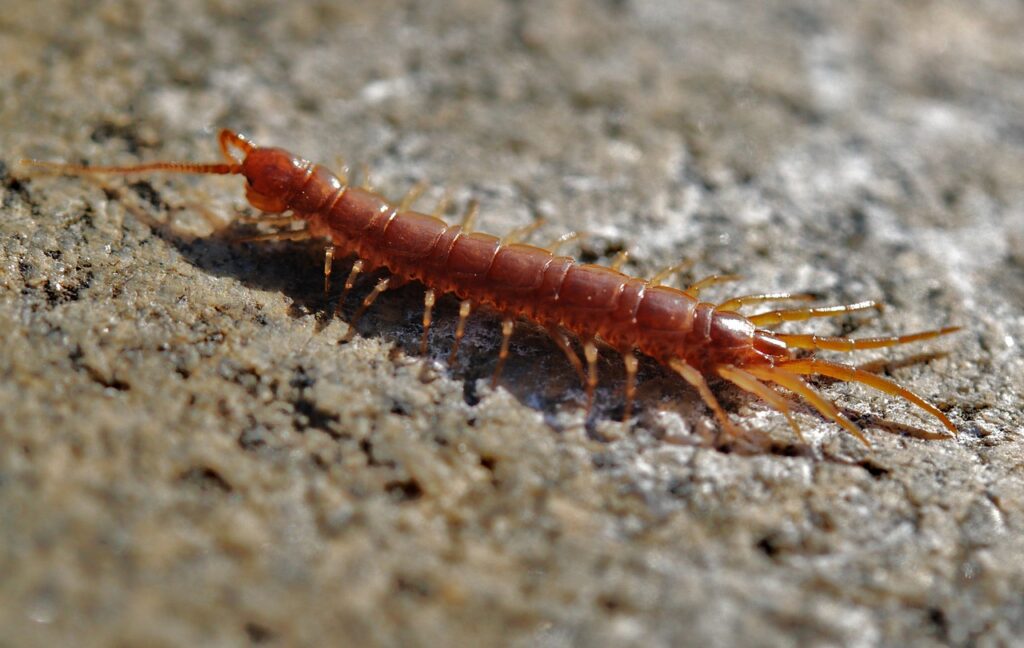
There are more than 3,000 known species of arthropods with elongated bodies, more commonly known as centipedes. Their segmented bodies are covered in exoskeleton featuring many legs that are around 30 to 100+ legs per centipede. There are even some species in Australia that may have as many as 15-191 legs.
Like most arthropods, the centipede doesn’t have internal skeletons or no backbone. What it has is a segmented exo that protects its internal organs. Centipedes mainly flourish in tropical climates as they can also live in temperate areas. Fun fact: Despite being called centipede, meaning 100 legs, it is almost always either more or less than 100 legs, but never exactly that number.
9. Cicada
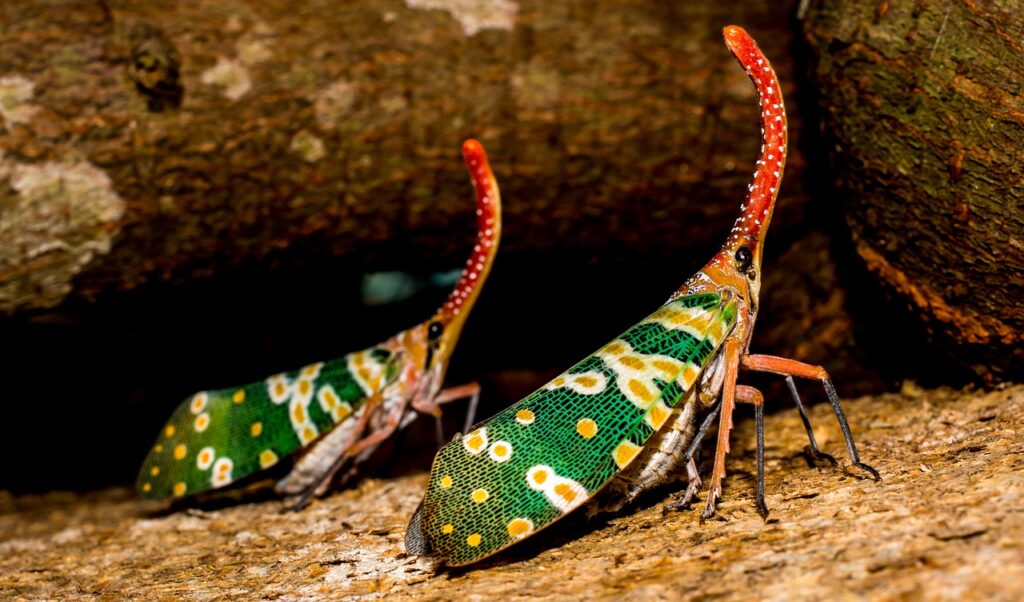
Cicadas are true bug insects that are very musical. The male cicada is likely the one that always breaks into a song.
Its body is divided into three parts: the head, the thorax, and the abdomen. It, too, has an exoskeleton that protects its internal organs.
When it molts, it discards its old soft exo and grows a new one. Depending on the species, a cicada may stay underground for 2-17 years, feeding, sleeping, tunneling, and not hybernating, as some previously thought. Afterwhich, they emerge from the ground, where they shed their soft exoskeleton and grow a hard one.
After living for more than a decade underground, the cicada will emerge and then live a brief life above ground in as short as a few weeks.
10. Ladybug
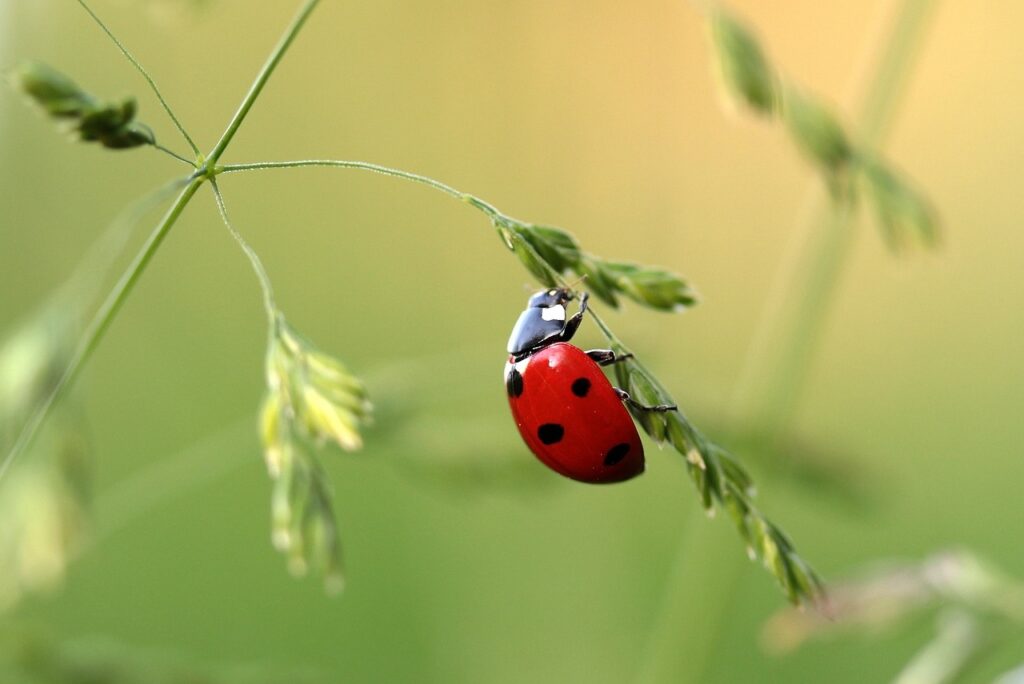
A ladybug’s exoskeleton comes in bright red with black dots. Its exo holds the ladybug’s body together like an internal skeleton in mammals. They have black legs, a head, and a pair of antennas. Curiously though, their exo also acts as wings over the actual wings and internal organs that it protects underneath it.
Do not be surprised that the Asian ladybug species may bite and secrete a foul-smelling liquid when threatened. They are, however, not poisonous. It can live anywhere between 1-2 years, float, and swim in the water too!
11. Spiny Lobsters
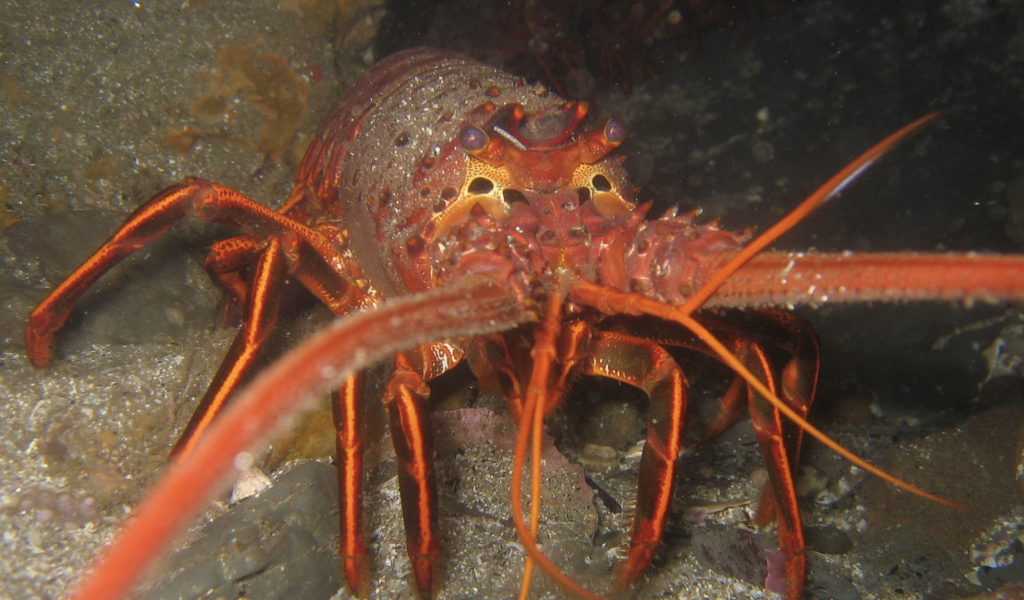
Spiny lobsters are true lobsters that that has carapace and exoskeleton. Their long, thick, spiny antennae and no claws on the first four pairs of walking legs differ from regular lobsters.
On the other hand, a female spiny lobster has a small claw on the fifth pair of its walking legs.
They hunt at night but are fairly social sea creatures. It protects itself, from predators, by flexing its tails to lunge backward for escape and let out a loud screech by rubbing its antennae against a smooth part of the exoskeleton.
12. Cone Snail
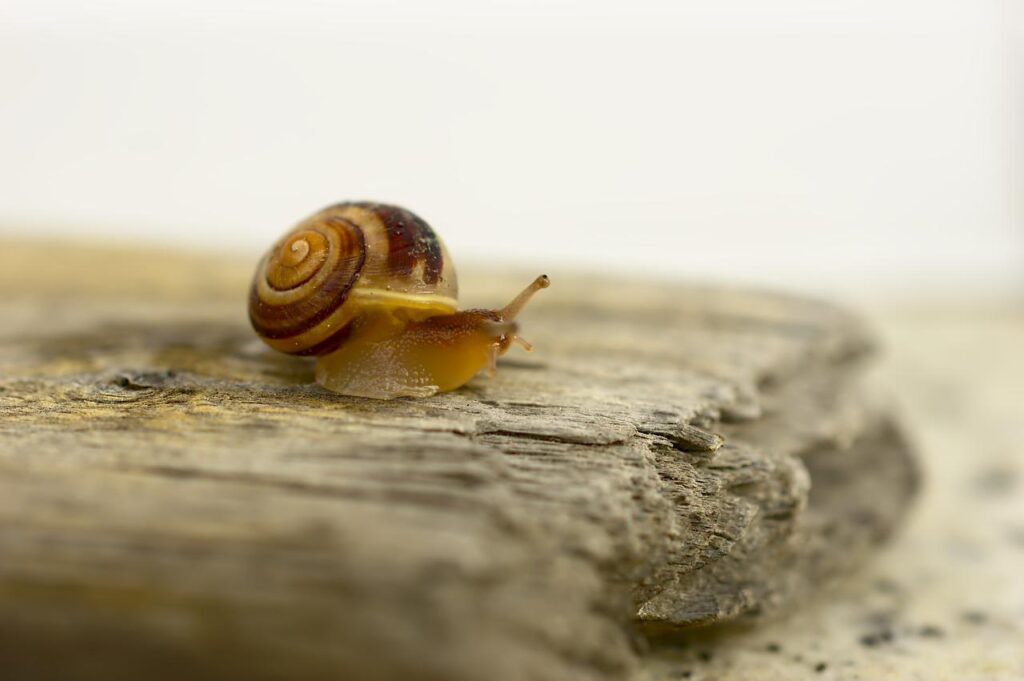
Also known as cone shells, these are a big group of small, medium, and large-sized predatory sea snails. They are known to be venomous, with the small ones affecting like a bee sting and the larger ones which can be fatal to humans. Their exoskeleton is recognizable as a conical shell that has beautiful colored patterns.
They have a single harpoon-like tooth that contains neurotoxins that can shoot out for hunting or defending themselves. The cone snail can hunt and eat animals larger than itself as it forages in the corals and tidal waters at night.
13. Coconut Crab

Popularly known in large numbers in the Batanes Islands in the Philippines, this semi-exotic land crustacean is also known as the robber crab or palm thief. As they grow and reach an inch across in size, they give up their exoskeleton and grow another, eventually protecting their whole body. They approximately molt 3-4 times throughout their lifetime.
Scientists have discovered that the coconut crab exoskeleton has the highest abrasion resistance among arthropods, making it so strong that its pinchers can generate up to 740-pound force, which is 4 to 5 times stronger than a human jaw.
14. Oysters and Clams

If you like oysters and clams, you’d be interested to know that these special creatures can usually be found in salty brackish waters. They are fully enclosed in their exoskeleton/shell, two halves of a whole, otherwise known as bivalves. They are generally classified as mollusks, with scallops and mussels in the same category.
The soft tissue muscle inside the shell controls the shell’s closing and opening, allowing oysters to feed and defend themselves from predators. Oysters are “keystone” species that are important and beneficial to the ecological balance in the waters where they live.

